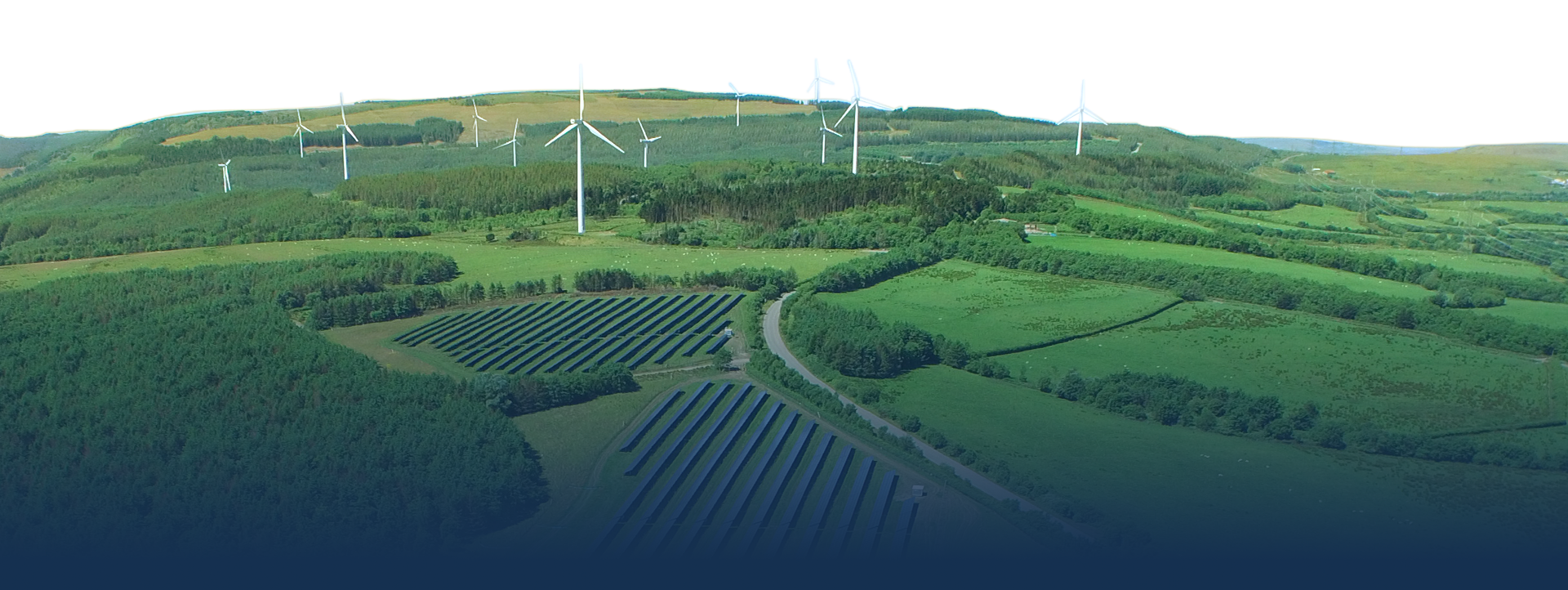Wind power is a non-polluting and clean source of renewable energy. Unlike the burning of fossil fuels (coal, oil and gas) to produce electricity, wind power generation does not release carbon dioxide emissions into the atmosphere, which most scientists believe is a major cause of climate change.
According to Renewable UK “onshore wind offers the most cost-effective choice for new electricity in the UK, bar none – it is cheaper than gas, nuclear, coal and other renewables. This clean, modern technology is popular with the public, regularly enjoying support levels of up to 74% according to the Government’s own opinion polls.
In 2020, onshore wind contributed 11% of the UK’s electricity needs, with a total of 34.7 terrawatt hours (TWh) generated – more than enough to power 18.5 million UK homes for an entire year. As of 2023, overall, the UK has installed over 15 gigawatts of onshore wind capacity, which supports jobs and local economic growth.
The cumulative investment impact of the UK’s 1,500 operational onshore wind farms is over £35 billion, demonstrating the significant contribution which onshore wind can make to delivering low-cost, low-carbon energy that pays back to consumers.”
In Wales, National planning policy is supportive of onshore wind and solar. Planning Policy Wales 12 (PPW 12) is clear that planning authorities should facilitate all forms of renewable and low carbon energy development. In doing so, planning authorities should seek to ensure their area’s full potential for renewable and low carbon energy generation is maximised and renewable energy targets are achieved. (para 5.9.1).
Future Wales: The National Plan 2040 (Future Wales) was published by the Welsh Government in February 2021. Future Wales sets out the national development framework for Wales and has development plan status.
Future Wales recognises the role that Wales can play in supporting the use of renewable energy. It recognises that “Wales can become a world leader in renewable energy technologies” (page. 48) Furthermore, it recognises that “Our wind and tidal resources, our potential for solar generation, our support for both large and community scaled projects and our commitment to ensuring the planning system provides a strong lead for renewable energy development, mean we are well placed to support the renewable sector, attract new investment and reduce carbon emissions” (page. 48).
Future Wales reaffirms the Welsh Government’s commitment to maximising renewable energy targets
For 100% of electricity consumption to be generated from renewable energy by 2035;
For 1.5 gigawatt of renewable energy capacity to be locally owned by 2035; and
For new renewable energy projects to have at least an element of local ownership from 2020.
Future Wales identifies 10 Pre Assessed Areas for wind energy within which there is a presumption in favour of large scale wind development under Future Wales’ Policy 17 - Renewable and Low Carbon Energy and Associated Infrastructure subject to detailed criteria in Policy 18 – Renewable and Low Carbon Energy Developments of National Significance. Policy 17 states that “The Welsh Government strongly supports the principle of developing renewable and low carbon energy from all technologies and at all scales to meet our future energy needs”.
NEWS
The UK and Welsh Assembly Governments are committed to increasing the amount of renewable energy we produce. The Welsh Government has recently strengthened its commitment to maximising renewable energy targets, which now propose:
For 100% of electricity consumption to be generated from renewable energy by 2035;
For 1.5 gigawatt of renewable energy capacity to be locally owned by 2035; and
For new renewable energy projects to have at least an element of local ownership from 2020.
Future Wales identifies 10 Pre Assessed Areas (PAAs) for wind energy within which there is a presumption in favour of large scale wind development If you have land within these PAAs that you think may be suitable for large scale wind or solar development then please do get in contact.
Pennant Walters is a Wales based renewable energy development company operating since 2002 with its head office in Hirwaun, near Aberdare South Wales. We take projects from origination, through planning, financing to construction and then operational management. We manage all six of the wind projects we have built and so landowners, local community and other stakeholders have continuity and get to deal with the same PW personnel they met at the outset of the project (in some cases more than 15 years ago).
Currently we have just under 124MW of operational onshore wind capacity in South Wales with another 104MW of onshore capacity permitted awaiting construction over the next few years. We are Wales’ largest home grown renewable energy developer.







